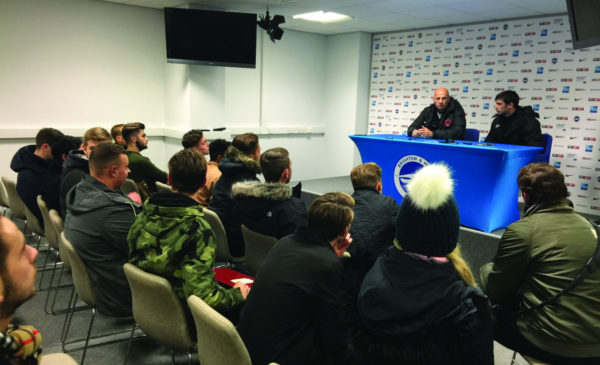There is a philosophy in rugby union and that is to keep your score ticking no matter what. Drop goals used to be a key element of this, but in recent years that’s not the case.
Rugby nowadays, more and more teams wait for penalties and when awarded, kickers opt for the three points rather than going for the corner and attempting to score a try.
Perhaps the reason for penalty kicks is because there is no guarantee that the try will be successful, and the ball could be turned over or a foul occurs.
But it is more than likely that the ball will go through the posts by the team’s kicker. The likes of Owen Farrell, Leigh Halfpenny and Finn Russell wouldn’t consider going for these kicks if they didn’t think they could score it.
With penalties, it is a dead ball situation, it’s quieter than a live game scenario and there is more time to think about it. Therefore, in comparison it may seem like the more viable option than a drop goal.
However, if kickers are reluctant to go for a try and opt for penalties, it begs the question. Why do teams not attempt more drop goals?
It has been disputed in the past that drop goals are incredibly difficult. Not only do players need to be in goal range and have an accurate kicker but also positioning from the forwards is pivotal in the success of them keeping opposing players away.
During the Six Nations, France are the team that tend to go for drop goals and add that third aspect to the game.
Romain Ntamack scores a drop goal against Italy here. The positioning of the French shows what is coming. The wingers are standing there, knowing full well they won’t receive the ball and aren’t even in an attackable position.
There is no intention of attacking the try line, the French have positioned themselves perfectly so the gap between the Italians and Ntamack is too large to close in the time it takes to kick the ball.
Furthermore, take Johnny Wilkinson for instance, not only did he win England’s only Rugby World Cup with an extra time drop goal, which in those circumstances is a more viable point scoring option. Wilkinson has scored 36 drop goals in his career and that statistic also makes him the most prolific drop goal scorer in the history of test rugby.
England fans hoped that Wilkinson’s drop goal prowess would rub off on protégé Owen Farrell, but ultimately that didn’t occur.
There was some hope for drop goals though. During the 2019 Rugby World Cup in Japan, there was a significant increase in them which led to commentators stating that “drop goals are back”. But almost 15 months after the tournament they have subsided once more.
This scoring technique makes the game more exciting. It adds another dimension to the sport. It also makes the game more mentally challenging as well as physical. Defending becomes much more than defending the try line, if a team is within range of the posts they will punish their opponents.
Regardless of a penalty or drop goal, if scored, the opposing team will kick off and restart the game once again, so both outcomes are exactly the same.
Winning is about taking chances and nowadays teams play a lot safer than that of the old guard of rugby. In sport, you need those players who take risks and rugby union needs more of them.








